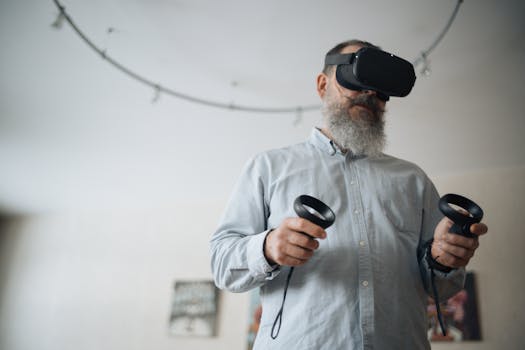
The future of satellite technology: trends and innovations is an exciting and rapidly evolving field, with new trends and innovations emerging every day. The future of satellite technology: trends and innovations is an exciting and rapidly evolving field, with new trends and innovations emerging every day. Satellite technology has come a long way since the launch of the first artificial satellite, Sputnik, in 1957. Today, satellites play a crucial role in our daily lives, from providing connectivity and navigation to enabling weather forecasting and Earth observation.
One of the most significant trends in satellite technology is the development of small satellites, also known as CubeSats. These tiny satellites are compact, lightweight, and relatively inexpensive to launch, making them an attractive option for startups and researchers. Small satellites are being used for a variety of applications, including Earth observation, communications, and scientific research. For instance, the NASA’s Earth Observing System uses small satellites to monitor the Earth’s climate, weather, and natural resources.
Another trend in satellite technology is the emergence of satellite constellations. These constellations consist of multiple satellites that work together to provide global coverage and high-speed connectivity. Companies like SpaceX, OneWeb, and Amazon’s Kuiper Systems are launching thousands of satellites into low Earth orbit to provide broadband internet services to remote and underserved communities. For example, SpaceX’s Starlink constellation aims to provide high-speed internet services to the entire world, with a focus on rural and remote areas.
In addition to these trends, there are several innovations that are transforming the satellite industry. One of the most significant innovations is the development of advanced propulsion systems. Traditional satellites use chemical propulsion systems, which are heavy and inefficient. New propulsion systems, such as electric propulsion and Hall effect thrusters, are more efficient and allow satellites to operate for longer periods of time. For instance, the European Space Agency’s Gaia mission uses advanced propulsion systems to maintain its position in space and conduct high-precision astrometry.
Another innovation in satellite technology is the use of artificial intelligence and machine learning. Satellites are generating vast amounts of data, and AI and ML algorithms are being used to analyze and interpret this data. For example, satellite imagery is being used to monitor crop health, detect natural disasters, and track climate change. The use of AI and ML is also enabling the development of autonomous satellites, which can operate independently and make decisions without human intervention.
The future of satellite technology is not without its challenges, however. One of the biggest challenges facing the industry is the issue of space debris. As more satellites are launched into space, the risk of collisions and debris increases. This poses a significant threat to the long-term sustainability of space exploration and development. To address this challenge, companies and governments are working together to develop sustainable practices and regulations for satellite operations.
Despite these challenges, the future of satellite technology looks bright. New trends and innovations are emerging every day, and the industry is poised for significant growth and development. As satellite technology continues to evolve, we can expect to see new applications and services that transform the way we live and work.
The use of satellite technology is also being driven by the increasing demand for connectivity and navigation. The Internet of Things (IoT) is driving the demand for satellite-based connectivity, as more devices become connected to the internet. Satellite navigation is also becoming increasingly important, as the number of autonomous vehicles and drones increases. The use of satellite technology is also being driven by the increasing demand for Earth observation and weather forecasting.
In conclusion, the future of satellite technology: trends and innovations is an exciting and rapidly evolving field, with new trends and innovations emerging every day. From small satellites and satellite constellations to advanced propulsion systems and AI and ML, the industry is poised for significant growth and development. As satellite technology continues to evolve, we can expect to see new applications and services that transform the way we live and work.
The impact of satellite technology on society is significant, and it will continue to shape our lives in the future. Satellite technology has the potential to provide connectivity and navigation to remote and underserved communities, enabling them to access vital services and participate in the global economy. It also has the potential to enable the development of new industries and services, such as autonomous vehicles and drones.
Overall, the future of satellite technology is bright, and it will continue to play a vital role in shaping our lives and transforming the way we live and work. As the industry continues to evolve, we can expect to see new trends and innovations emerge, and the impact of satellite technology on society will only continue to grow.
The development of satellite technology is also being driven by government initiatives and investments. Governments around the world are investing in satellite technology, recognizing its potential to drive economic growth and development. The European Space Agency, for example, has launched several initiatives to promote the development of satellite technology, including the Galileo navigation system and the Copernicus Earth observation program.
In addition to government initiatives, the development of satellite technology is also being driven by private investment. Companies like SpaceX and Blue Origin are investing heavily in satellite technology, recognizing its potential to drive innovation and growth. The use of satellite technology is also being driven by the increasing demand for space tourism and exploration.
The future of satellite technology is not without its challenges, however. One of the biggest challenges facing the industry is the issue of regulation and policy. As the industry continues to evolve, there is a need for clear regulations and policies to govern the use of satellite technology. This includes issues such as spectrum allocation, licensing, and intellectual property protection.
Despite these challenges, the future of satellite technology looks bright. New trends and innovations are emerging every day, and the industry is poised for significant growth and development. As satellite technology continues to evolve, we can expect to see new applications and services that transform the way we live and work.
In conclusion, the future of satellite technology: trends and innovations is an exciting and rapidly evolving field, with new trends and innovations emerging every day. From small satellites and satellite constellations to advanced propulsion systems and AI and ML, the industry is poised for significant growth and development. As satellite technology continues to evolve, we can expect to see new applications and services that transform the way we live and work.




